The post Neural Networks and Deep Learning appeared first on Magnimind Academy.
]]>1- What’re neural networks?
![]()
In simple words, neural networks can be considered mathematical models loosely modeled on the human brain. Neural networks engage in two distinguished phases. First, comes the learning phase where a model is trained to perform certain tasks. These could be how to perform language translations or how to describe images to the blind. And second comes the application stage where the trained model is utilized. You can think of Spotify sending you a weekly-playlist created by analyzing your music taste. Neural networks come with some fundamental building blocks that include neurons, input, outputs, weights, and biases. Here, each neuron comes with one or multiple inputs together with a single output.
You can use this output as an input to one or multiple neurons or as the entire network’s output. The most intelligent thing about neural networks is the self-learning during the training period of the models. Here, a neural network is given a dataset of inputs (could be text, speech, or images – but everything has to be translated to numbers) and a true answer accompanying every observation set. Now the model learns to find out the true answer based on the inputs it has been presented with. Throughout the learning process, the model would estimate second-hand-values continuously and compare those to the true values. If there’s a large difference, the model parameters get automatically updated to push those estimates closer to true second-hand-values. This process gets repeated until the average difference between true and assigned values becomes adequately small.
2- What’s deep learning?
![]()
You can think of deep learning as the absolute cutting edge of AI (artificial intelligence). Here, the machine trains itself to process, as well as, learn from data. With deep learning, you don’t need to teach machines to process and learn from data, which is the working method of machine learning.
Parting Thoughts
![]()
The difference between deep learning and neural networks remains in the model’s depth where the former phrase is used to mention complex neural networks. A deep learning system is simply a self-teaching one that keeps on learning by filtering information via multiple hidden layers, much like the way the human brain works. It’s being assumed by some people that deep learning will automate a significant number of tasks and might replace many human workers in the future. But it’s also important to understand that implementation of deep learning might replace someone who works on repetitive, manual tasks but it just can’t replace the engineer or the scientist developing and maintaining a deep learning application.
. . .
To learn more about deep learning, click here and read our another article.
The post Neural Networks and Deep Learning appeared first on Magnimind Academy.
]]>The post What is the best neural network model for temporal data in deep learning? appeared first on Magnimind Academy.
]]>You can consider an artificial neural network as a computational model which is based on the human brain’s neural structure. Neural networks are capable of learning to perform tasks such as prediction, decision-making, classification, visualization, just to name a few.
An artificial neural network contains processing elements or artificial neurons and is organized in different interconnected layers namely input, hidden, and output. In deep learning, different types of neural networks are used. Since the emergence of big data, the field of deep learning has been gaining steady popularity as the performance of neural networks has improved by working with more amounts of data than ever before.
![]()
A lot of neural networks are there, each with its unique strengths. Different principles are used by different types of neural networks to determine their own rules. Let’s have a look at the most common ones.
- Convolutional neural network or CNN: A convolutional neural network comes with one or multiple convolutional layers, which can either be pooled or completely interconnected and utilizes a variation of multilayer perceptrons. Before the result is passed on to the next layer, a convolutional operation on the input is used by the convolutional layer. This operation lets the network to be deeper but with much fewer parameters. Convolutional neural networks demonstrate excellent results in speech and image applications.
- Recurrent neural network or RNN: A recurrent neural network is capable of remembering the past the decisions are influenced by what it has learned in the past. In simple words, each node of a recurrent neural network acts as a memory cell while performing computations and carrying out operations. LSTM or Long Short-Term Memory is a specific RNN architecture which was designed to model temporal sequences, as well as, their long-range dependencies more accurately compared to traditional RNNs. The capability of recurrent neural networks suggests that they can make better predictions by learning the temporal context of input sequences. Sequence prediction problems may come in different forms and can be best described by the types of outputs and inputs supported. Some instances of sequence prediction problems may include One-to-Many, Many-to-One, and Many-to-Many. LSTMs, in particular, have received a huge success when working with deep learning. It includes both sequences of spoken language and sequences of text. In general, recurrent neural networks are used for text data, speech data, regression prediction problems, classification prediction problems, and generative models.
Final Takeaway

As you may have understood from the above, a recurrent neural network is the best suited for temporal data in working with deep learning. Neural networks are designed to truly learn and improve more with more usage and more data. And that’s why it’s sometimes said that different kinds of neural networks will be the next-generation AI’s fundamental framework.
. . .
To learn more about deep learning, click here and read our another article.
The post What is the best neural network model for temporal data in deep learning? appeared first on Magnimind Academy.
]]>The post Deep Learning and Its 5 Advantages appeared first on Magnimind Academy.
]]>1- What’s deep learning?
![]()
Put simply, deep learning is a subset of machine learning which teaches machines to do what humans are naturally born with: learn by example. Though the technology is often considered a set of algorithms which ‘mimics the brain’, a more appropriate description would be a set of algorithms which ‘learns in layers’. It involves learning through layers that enable a computer to develop a hierarchy of complicated concepts from simpler concepts. In deep learning, a model learns to perform tasks directly from text, sound, or images and can achieve incredible accuracy, sometimes more than human-level performance. Deep learning is the central technology behind a lot of high-end innovations like driverless cars, voice control in devices like tablets, smartphones, hands-free speakers etc and many more. It’s offering results which weren’t possible before or even with traditional machine learning techniques.
2- Examples of deep learning in real-world scenarios
![]()
A huge number of industries are using deep learning to leverage its benefits. Let’s have a look at a couple of them.
- Electronics: Deep learning is being utilized in automated speech translation. You can think of home assistance devices which respond to your voice and understand your preferences.
- Automated driving: With the help of deep learning, automotive researchers are now able to detect objects like traffic lights, stop signs etc automatically. They’re also using it to detect pedestrians that helps lower accidents.
- Medical research: Deep learning is being used by cancer researchers to detect cancer cells automatically.
3- How deep learning models work?
![]()
Majority of the deep learning methods utilize neural network architectures and that’s why deep learning models are widely known as deep neural networks as well. A deep learning process consists of two key phases – training and inferring. The training phase can be considered as a process of labeling huge amounts of data and identifying their matching characteristics. Here, the system compares those characteristics and memorizes them to come up with correct conclusions when it encounters similar data next time. During the inferring phase, the model makes conclusions and labels unexposed data with the help of the knowledge it gained previously.
During the training of deep learning models, professionals use large sets of labeled data together with neural network architectures which learn features from the data directly without the need for feature extraction done manually.
4- How deep learning models are created and trained?
![]()
Professionals use deep learning in three most popular ways to perform object classification. Let’s have a look at them.
- Transfer learning: The transfer learning approach is being used by most deep learning It’s a process which involves fine-tuning a pre-trained model. For instance, you begin with an existing network and feed in fresh data that contains previously unknown classes. After doing some modifications to the network, you become able to perform a new task like categorizing only cats or dogs rather than 1000 different objects. This approach also comes with the advantage of requiring much less data, so computation time drops significantly.
- Training from scratch: In order to train a deep learning network from scratch, you’d need to capture a very large labeled dataset apart from designing a network architecture which will learn the features and mimic. This approach is effective for new applications, or for applications which will have a relatively big number of output categories. This is a relatively less popular approach because, with the rate of learning and large volumes of data, the networks typically take significantly more time to train.
- Feature extraction: It’s a more specialized, slightly less common approach to deep learning where the network is used as a feature extractor. Here, all the layers are assigned to learn specific features from images and thus, during the training process, these features can be pulled out of the network at any time. Then these features can be utilized as input to machine learning models.
5- Difference between deep learning and traditional machine learning
![]()
Though deep learning was developed as an approach of machine learning, the focus has shifted mainly on deep learning these days and for reasons. Traditional machine learning refers to the process of extraction of knowledge from a large dataset loaded into the machine. Professionals formulate the rules and rectify errors made by the machine. This approach removes the negative overtraining impact which appears frequently in deep learning. In traditional machine learning, a machine is provided with training data and examples to help it make correct decisions. In other words, in a traditional machine learning approach, a machine can solve a significant number of tasks, but it cannot perform them without human control. Let’s have a look at the differences between traditional machine learning and deep learning.
- Deep learning models are capable of creating new features by themselves while in traditional machine learning approach, features need to be identified accurately by users.
- In deep learning, problems are solved on an end-to-end basis while in machine learning, tasks are divided into small pieces and then received results are combined into one conclusion.
It’s implied in the deep learning concept that a machine develops its functionality by itself at the current time as long as it’s possible.
6- 5 Key advantages of using deep learning
![]()
You may ask why a significant number of technology giants are steadily adopting deep learning. To understand the reason, we’ve to look at the advantages that can be gained by using a deep learning approach. Here’re five key advantage of using this technology.
6.1- Maximum utilization of unstructured data
![]()
Research from Gartner revealed that a huge percentage of an organization’s data is unstructured because the majority of it exists in different types of formats like pictures, texts etc. For the majority of machine learning algorithms, it’s difficult to analyze unstructured data, which means it’s remaining unutilized and this is exactly where deep learning becomes useful. You can use different data formats to train deep learning algorithms and still obtain insights which are relevant to the purpose of the training. For instance, you can use deep learning algorithms to uncover any existing relations between industry analysis, social media chatter, and more to predict upcoming stock prices of a given organization.
6.2- Elimination of the need for feature engineering
![]()
In machine learning, feature engineering is a fundamental job as it improves accuracy and sometimes the process can require domain knowledge about a certain problem. One of the biggest advantages of using deep learning approach is its ability to execute feature engineering by itself. In this approach, an algorithm scans the data to identify features which correlate and then combine them to promote faster learning without being told to do so explicitly. This ability helps data scientists to save a significant amount of work.
6.3- Ability to deliver high-quality results
![]()
Humans get hungry or tired and sometimes make careless mistakes. When it comes to neural networks, this isn’t the case. Once trained properly, a deep learning model becomes able to perform thousands of routine, repetitive tasks within a relatively shorter period of time compared to what it would take for a human being. In addition, the quality of the work never degrades, unless the training data contains raw data which doesn’t represent the problem you’re trying to solve.
6.4- Elimination of unnecessary costs
![]()
Recalls are highly expensive and for some industries, a recall can cost an organization millions of dollars in direct costs. With the help of deep learning, subjective defects which are hard to train like minor product labeling errors etc can be detected. Deep learning models can also identify defects which would be difficult to detect otherwise. When consistent images become challenging because of different reasons, deep learning can account for those variations and learn valuable features to make the inspections robust.
6.5- Elimination of the need for data labeling
![]()
Data labeling can be an expensive and time-consuming job. With a deep learning approach, the need for well-labeled data becomes obsolete as the algorithms excel at learning without any guideline. Other types of machine learning approaches aren’t nearly as successful as this type of learning.
Final Thoughts

Keeping in mind the above and more advantages of using deep learning approach, it can be said that it’s obvious to experience the impact of deep learning in different high-end technologies like Advanced System Architecture or Internet of Things in the future. We can expect to see more valuable contributions to the larger business realm of connected and smart products and services. These days, deep learning has come a long way from being just a trend and it’s quickly becoming a critical technology being adopted steadily by an array of businesses, across multiple industries.
. . .
To learn more about python, click here and read our another article.
The post Deep Learning and Its 5 Advantages appeared first on Magnimind Academy.
]]>The post What are the differences between deep learning and usual machine learning? appeared first on Magnimind Academy.
]]>Though some people use these terms interchangeably, they’re not the same. In this post, we’re going to learn the differences between deep learning and usual machine learning based on various factors. But before delving deeper, let’s have a look at what these terms actually stand for.
1- Machine learning
![]()
In its most basic form, machine learning is a method to implement artificial intelligence. Machine learning algorithms parse data, learn from it, and then apply that learning to make informed decisions. To understand easily how machine learning algorithms work, you can think of an on-demand music streaming service. For it to decide about which new artists or songs to recommend to a particular listener, machine learning algorithms relate the preferences of that listener to other listeners who’ve a similar musical taste. Usual machine learning is widely used to perform all kinds of automated tasks across multiple industries, from finance professionals trying to identify favorable trades to data security firms trying to succeed in finding malware. When we refer to something that’s capable of doing machine learning, it means it’s capable of performing a function with data provided to it and gets better at that function progressively. Most often, usual machine learning algorithms work on a specific set of features extracted from the raw data. Features can be very simple like temporal values for a signal, pixel values for images, among others.
It’s important to understand that an algorithm isn’t a complete computer program which is a set of instructions. It’s a limited sequence of steps required to solve a specific problem. For instance, a search engine depends on an algorithm which grabs the text entered into the search box by a user and searches the associated database to come up with related search results. It takes certain steps to achieve a specific goal.
Different types of learning algorithms are used in machine learning. Let’s have a quick look at them.
- Supervised learning: It’s a learning technique where the entire learning process is governed. Here, the key goal of algorithms is to predict the outcome when a set of training samples is provided together with the training labels. For example, if the assigned goal is to distinguish between pictures of boys and girls utilizing an algorithm for sorting images, the ones with a male child would come with a ‘boy’ label and those with a female child would appear with a ‘girl’ label. It’s treated as a ‘training dataset’ and those labels remain in place until the program can sort the images successfully at an acceptable rate.
- Unsupervised learning: Unlike the previous technique, here you don’t have any training labels for the training purposes. Here, the algorithms are formulated in a manner so that they can find suitable patterns and structures in the data. In this technique, any of the two methods is used to perform the assigned task. One is called ‘clustering’ which groups similar objects together. The other method is called ‘association’ where the task is performed by determining a common pattern between the objects.
- Reinforcement learning: This technique comes with an agent which learns how to behave in a particular environment by taking steps and quantifying the results. Chess can be considered as an excellent example of reinforcement learning. The program understands the rules of chess and how to play, and takes step by step actions to complete a round. The only information given to the program is whether it lost or won the match. If it loses the match, the game is replayed by the program, keeping track of the successful moves, until it wins a match finally.
That’s all about the fundamentals of usual machine learning. Now, let’s understand what deep learning is all about.
2- Deep learning
![]()
Though deep learning has been around for some time now, these days it’s getting more attention because of widespread adaptation. It’s a subset of machine learning and also comes with supervised, unsupervised, and reinforcement learning. Though deep learning is inspired by the way the human brain works, it needs high-end machines and huge amounts of big data to provide optimum performance. Unlike usual machine learning algorithms which break problems down into different parts and individually solve them, deep learning solves a problem from end to end. A deep learning technique is capable of learning categories incrementally via its hidden layer architecture. Probably the biggest advantage of using this technique is the more data you feed deep learning algorithms, the better they get at solving a task. And technology’s ‘Big Data Era’ is capable of providing massive amounts of opportunities for innovations in deep learning. There’s an array of methods are used in this technique. Some of these include convolutional neural network, recurrent neural network, generative adversarial network etc. In the earlier example for usual machine learning, where images of boys and girls were used, algorithms were used by the program to sort those images based on spoon-fed data mainly. But with deep learning, there’s no data given to the program to use. It scans every pixel within an image to identify edges which can be used to separate a boy from a girl. Then it’ll put shapes and edges into a ranked order of probable importance in order to determine those two genders.
3- Differences between deep learning and usual machine learning
![]()
Now that you’ve gained an overview of usual machine learning and deep learning, it’s time to learn about the differences between both based on some important points.
3.1- Data dependencies
![]()
The biggest difference between usual machine learning and deep learning lies in their performance as the volume of data increases. Usual machine learning algorithms usually perform well even if the volume of the dataset is small. On the other hand, deep learning algorithms require a massive amount of data to perform perfectly.
3.2- Feature engineering
![]()
Feature engineering refers to the process of putting the domain knowledge into the modeling of feature extractors to lower the complexity of data and make the patterns more visible in order to learn the algorithms working. The process is expensive and difficult in terms of expertise and time. In usual machine learning, performance depends on hand-crafted features as inputs. Here, features stand for pixel values, textures, shape, position, orientation, and color. The performance depends on how well these features are identified and extracted. On the other hand, deep learning doesn’t rely on hand-crafted features and performs a hierarchical method of feature extraction, which means it learns features layer-wise. Hence, deep learning lowers the task of creating new feature extractor for each and every problem.
3.3- Hardware dependencies
![]()
Usually, deep learning relies on high-end machines while usual machine learning can be performed on low-end machines. For example, GPUs (graphical processing units) are an integral part of deep learning functioning. On the other hand, you can implement a usual machine learning algorithm on a CPU with fairly standard specifications.
3.4- Training time
![]()
Generally, deep learning algorithms need a long time to train because of the presence of a huge number of parameters. For example, a deep ResNet (deep residual network) takes around two weeks to train fully from scratch. On the contrary, usual machine learning needs much less time to train, from a few seconds to a couple of hours.
3.5- Problem-solving technique
![]()
You need to divide a problem into different parts in order to solve it using usual machine learning. For example, you need to do multiple object detection. The task involves identifying what’s the object and where is it actually present in an image. In a usual machine learning approach, the problem would need to be divided into two steps: first is object detection and second is object recognition. On the other hand, in deep learning approach, the process would be done end-to-end. For instance, you’d need to pass in the image, and it would come out with the location together with the object’s name.
3.6- Industry ready
![]()
Usual machine learning algorithms are generally easy to be interpreted. They’re interpretable regarding the parameter it chose and the reason behind it. On the contrary, deep learning algorithms are simply a black box. Even if those algorithms can outshine humans in performance, they’re still not reliable in the context of to be deployed in the industry.
Conclusion

Both the usual machine learning and deep learning have the potential to transform the business landscape. Machine learning is already being heavily integrated by businesses across different industries to gain a competitive advantage. Deep learning is considered one of the most high-end techniques to deliver state-of-art performances. Both of these applications have been surprising researchers each day with their capabilities to do wonders and we can expect to see this trend to be continued in the future.
. . .
To learn more about data science, click here and read our another article..-
The post What are the differences between deep learning and usual machine learning? appeared first on Magnimind Academy.
]]>The post Deep Learning Structure Guide for Beginners appeared first on Magnimind Academy.
]]>1- What is deep learning?
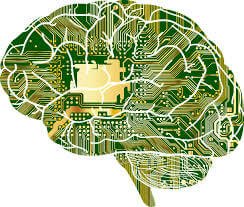
In its simplest form, deep learning, also known as deep machine learning or deep structured learning, is a subset of machine learning and refers to neural networks that have the ability to learn the input data’s increasingly abstract representations. These days, implementation of deep learning techniques can be found to a great extent, from self-driving cars to academic researches.
2- What sets deep learning apart?

If you follow prominent job portals, you can find that there’s a significant number of deep learning professionals job positions almost all of which are paying really well. Now, you may wonder why do companies hire these professionals? Or, what can such a professional bring to them? Let’s have a look.
2.1- Quality and accuracy

Every company wants quality and sometimes work produced by human employees come inferior and with errors. This is particularly true for data processing repetitive tasks. However, a worker powered by deep learning is capable of developing new understandings and producing high-quality, accurate results.
With the help of deep learning, software robots can understand spoken language, recognize more images and data, and work more efficiently. These are the main reasons why companies across the globe are hiring deep learning professionals.
2.2- Increased cost and time benefit

In its simple form, neural networks can be considered as trainable brains. These networks are provided with information and trained to do tasks, and they’ll use that training together with new information and their own work experience when it comes to accomplishing those tasks.
Implementation of deep learning in business can save the company a significant amount of time and money. In addition, when time-consuming or repetitive tasks are done efficiently and quickly, employees are freed up to take care of creative tasks that actually need human involvement.
3- Deep learning vs. Machine learning
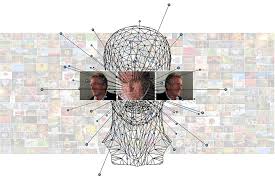
As deep learning is a branch of machine learning, general people often become confused about when to use over the other. In general, when it comes to large datasets, deep learning should be the ideal technique while traditional machine learning models can do perfectly well with small datasets.
Deep learning outperforms traditional machine learning in the context of complex problems like speech recognition, natural language processing, image classification etc. Another key difference between them is that deep learning algorithm needs a long time to be trained because a large number of parameters while traditional machine learning algorithms can be trained within a few hours. Interpretability is another reason for which many companies prefer using machine learning over deep learning.
4- Guide to deep learning structure

Deep learning is a complex field consisting of several components. In this deep learning structure guide part of the post, we’ve put together the major elements that you’d need to master upon.
Also, we’ve designed this deep learning guide assuming you’ve a good understanding of basic programming and basic knowledge of probability, linear algebra and calculus. Let’s have a look at the guide.
4.1- Fundamental of machine learning
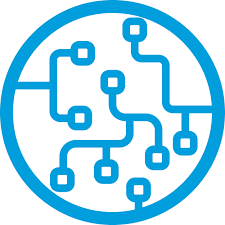
It’s imperative to get a good understanding of the basics of machine learning before you dive into deep learning. Basically, it’s distributed in three types of learning – supervised, unsupervised and reinforced learning.
In deep learning, a significant amount of machine learning techniques like logistic regression, linear regression etc are used. There’re lots of resources available that can help you accomplish this goal. You should also learn Python at this stage. Try to get yourself introduced to scikit-learn, a widely used machine learning library. At the end of this stage, you should have a good theoretical as well as a practical grasp of machine learning.
4.2- Introduction to deep learning
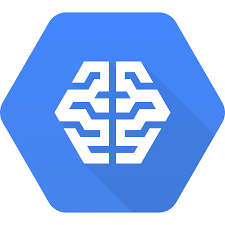
The first thing you should do is understand the frameworks of deep learning. Deep learning professionals mainly need to work with algorithms which are inspired by neural networks. Though there’re lots of resources available online that you can use to learn the basics of deep learning, it’s recommended to take a course from a reputed institute.
Try to get access to a GPU (graphics processing unit) to run your deep learning experiments. If possible, try to read some research papers in deep learning as they cover the fundamentals. At this stage, try to pick any of the three – PyTorch, TensorFlow or Keras. Whatever you choose, be sure to become very comfortable with it.
4.3- Introduction to neural networks
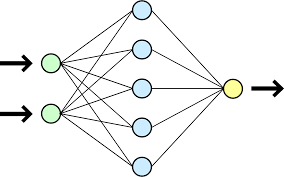
A neural network comes with a layered design that contains an input layer, a hidden layer, and an output layer. It functions like the human brain’s neurons such as receiving inputs and generating an output.
There’re several types of artificial neural networks that are implemented based on a set of parameters needed to determine the output and mathematical operations. The functions of these neural networks are utilized in deep learning which helps in image recognition, speech recognition, among others.
4.4- Fundamentals of Convolutional Neural Networks
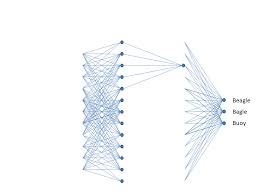
Put simply, Convolutional Neural Networks are multi-layer neural networks which consider the input data as images. It’s widely used in facial recognition, object detection, image recognition and classification etc. The best thing about Convolutional Neural Networks is the need for feature extraction is eliminated. The system learns to perform feature extraction.
The fundamental concept of CNN is, it utilizes convolution of images and filters to produce invariant features that are passed on to the next layer. In the next layer, the features are convoluted with a different set of filters to produce abstract and more invariant features and this process continues till we get final output/feature that is invariant to occlusions.
4.5- Understanding unsupervised deep learning
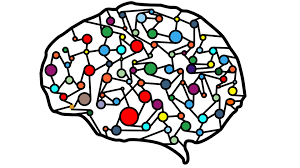
Unsupervised learning is a complex method with the goal of creating general systems which can be trained using a very minimum amount of data. It comes with the potential to unlock unsolvable problems which were done previously. This method is widely used to solve the problems created by supervised learning.
4.6- Introduction to natural language processing

Natural language processing is focused on making computers capable of understanding and processing human languages in order to get them closer to the human-level understanding of language. This domain mainly deals with developing computational algorithms that can automatically analyze and represent human language. It can also be used for dialogue generation, machine translation etc.
4.7- Introduction to deep reinforcement learning
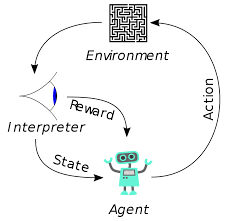
Through this technique, software or a machine can learn to function in an environment by itself. Though some may compare reinforcement learning with other forms of learning like supervised and unsupervised learning, there remains a major difference. It’s that reinforcement learning isn’t provided with outcome instructions, instead it follows trial and error mechanism to develop appropriate outcomes.
5- Major applications of deep learning
Here’re some real-life applications where deep learning is used heavily.
5.1- Speech recognition

You’ve probably heard about Apple’s intelligent assistant Siri, which is controlled by voice. The tech giant has started working on deep learning to develop its services even more.
5.2- Instant visual translation

You’re probably aware of that deep learning is utilized to identify images which contain letters and once they’re identified, those can be turned into text and translated, and the image can be recreated using that translated text. In general, this is called instant visual translation.
5.3- Automatic machine translation

You may have already heard about the translation ability of Google. But did you know what’s the technology behind Google Translate? It’s machine translation that tremendously helps people who cannot communicate between themselves because of the difference in language. You may ask that this feature has been around for some time now, so there shouldn’t be anything new in this. Using deep learning, the tech giant has completely reformed the machine translation approach in Google Translate.
Here, we’ve only mentioned some popular real-life cases that use deep learning extensively and showing promising results. There’re lots of other applications where deep learning is successfully being implemented and demonstrating good results.
Final thoughts

So, this is the overview of deep learning in a simple form. Hopefully, by now you’ve got a clear idea of what should be a good deep learning structure to follow in order to become a deep learning professional.
With the entire business landscape steadily leaning toward artificial intelligence together with massive amounts of data being generated every single day, the future surely holds a great place for deep learning professionals. The key reason behind this is the supremacy of deep learning in terms of accuracy when properly trained with an adequate amount of data. If you’re interested to step into the field, probably this is the best time to start your journey because the big data era is expected to provide massive amounts of opportunities for advancement and new innovations in the field of deep learning.
. . .
To learn more about data science, click here and read our another article.
The post Deep Learning Structure Guide for Beginners appeared first on Magnimind Academy.
]]>